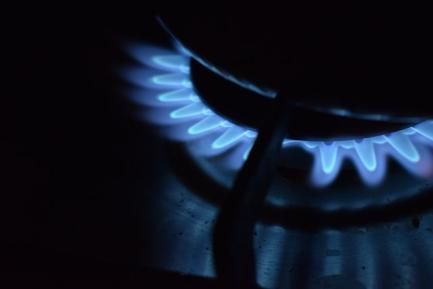The dance continues in the commodity market
The volatility in commodity prices since the outbreak of the pandemic continues to be a key factor for the economic outlook, given the implications for production costs and the prices consumers pay.

The strong recovery in global demand following the first wave of COVID-19, together with the supply problems in many commodity-exporting economies, resulted in a significant appreciation of commodities linked to the business cycle (industrial metal and energy prices) throughout the second half of 2020 and most of 2021.1 Just when this rally appeared to be running out of steam between Q4 2021 and Q1 2022, the outbreak of the war in Ukraine led to a further rise in most commodity prices in the first few weeks of the conflict, particularly in the case of those for which Russia and Ukraine are key global suppliers (see first and second charts). Following this initial widespread surge in prices in reaction to the war, commodity prices have followed a different course depending on the type of product. In the following sections we analyse the various factors that have affected each group of commodities in recent weeks.
- 1. See the Focus «Commodities: the resurgence of a market in the midst of the global recession» in the MR02/2021.


Russia is the third largest oil producer in the world and the second largest in terms of exports, with just over 10% of the global total in both cases. It is also one of the main exporters of natural gas, with a clear bias towards European sales (it exports 40% of the natural gas consumed in the region). As a key global supplier, the outbreak of the war and the sanctions imposed on Russia by the West led to a supply shock which triggered a sharp rise in Brent oil and natural gas prices (particularly the Dutch TTF, which acts as the benchmark for Europe).
On the natural gas side, the continued uncertainty regarding the reliability of Russian gas flows to Europe (with constant interruptions and reductions in the supply via North Stream I) caused TTF prices to rally by around 250% between June and late August, reaching all-time highs (€338/MWh on 26 August). In the closing days of August, the price moderated thanks to a sharp rise in Germany’s gas inventories (to around 85% of capacity), although this trend was reversed when Russia halted the flow of gas through the aforementioned pipeline indefinitely at the beginning of September.
On the oil side, its price has fallen sharply from the March highs of 128 dollars a barrel, although during August it remained around the 100-dollar mark (close to the seven-year high). Investors’ fears of a weakening in the global economy and its concerns for oil demand has more than offset the supply deficit that has been plaguing the sector since the pandemic. Also, unlike the price of natural gas, the price paid for oil in Europe is much less dependent on Russian supply, as it is a much more tradable product worldwide.2 Thus, it is easier to switch between different oil suppliers, unlike in the case of natural gas, where there is greater dependence on Russia and switching to other suppliers is more costly and time-consuming.
- 2. Natural gas prices vary more widely from region to region, partly because of the costs associated with its transportation, whereas oil prices are more global.
In the case of industrial metals, prices initially rallied, driven by fears regarding the implications of a lack of Russian supplies of those metals for which it is a key producer (palladium, nickel and aluminium). As the war progressed, that risk of a lack of supply failed to materialise, easing nerves in the markets. At the same time, the first signs of a cooling of economic activity began to appear in China (especially in the construction and real estate sectors), where the arrival of the Omicron variant led to strict lockdowns in some industrial regions of the country. On balance, both factors favoured a drop in prices of between 20% and 50% from the March highs, depending on the metal. The prime example was nickel, the price of which doubled in the early weeks of the conflict before quickly dropping back down to pre-war levels.
Prices of agricultural goods, mainly cereals such as wheat and corn, where Russia and Ukraine are global suppliers, also increased significantly. Unlike metals, where the stress on prices began to dissipate in late April, prices of agricultural goods continued to climb for much of Q2 2022. This was due to several specific factors, such as the closure of Ukraine’s Black Sea ports, rising global fertiliser prices (where Russia and Ukraine are also global suppliers), droughts in some major global producers (especially the US and Europe) and the food export bans introduced by several Asian producing countries such as India (due to fears of food insecurity).
In mid-June, however, some of these factors were reversed (most notably, the port of Odessa was reopened for exports). This allowed the price of agricultural goods to fall to around pre-war levels, such as in the case of wheat, which dropped in price by more than 20% from the year’s peak. Another aspect which contributed significantly to this movement was the fall in risk premia in futures prices, given that the supply risks in the sector did not materialise.
Looking ahead to the coming months, there is a great deal of uncertainty (closely linked to developments in the war) and for now it seems likely that the current trends will persist in the short and medium term. On the one hand, the cooling of economic activity could further reduce the demand for commodities, especially industrial metals. On the other hand, structural factors in the commodity markets suggest that prices may have limited margin for reductions, taking into account the following factors: the uncertainty linked to the war, which will keep energy prices high; the leakage of higher energy prices to other commodity prices, and the current low level of commodity inventories (in June, inventories were 19% below the historical average). Similarly, in the case of agricultural commodities, their prices are likely to remain more volatile than usual due to supply problems linked to the acceleration of the effects of climate change.




